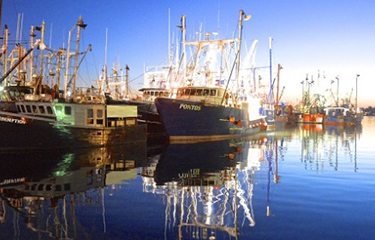NOAA reports slight improvements in US commercial fisheries

U.S. fisheries improved slightly in 2022, according to a new report from the National Oceanic and Atmospheric Administration (NOAA).
In its “2022 Status of the Stocks” report, NOAA Fisheries found that 93 percent of the 492 stocks the agency tracks are not subject to overfishing, compared to 92 percent in 2021.
“To me, that’s an incredible statistic for us to be able to articulate,” Kelly Denit, director of NOAA’s Office of Sustainable Fisheries, told SeafoodSource on an April 27 media call. “We are always working to improve our systems and address overfishing or overfished situations when they come up.”
In addition, 81 percent of stocks are not overfished, up from 80 percent the year before.
Two stocks – yellowtail flounder in Cape Cod and the Gulf of Maine, and winter flounder in Southern New England and the Mid-Atlantic – were rebuilt in 2022. NOAA noted that the winter flounder stock remains in poor condition, however, and the stock is only considered rebuilt because scientists reduced its target population level to below the stock’s current level.
There are still 24 stocks in the agency’s overfishing list. Red porgy from the southern Atlantic coast, lane snapper from the Gulf of Mexico, bigeye tuna from the Atlantic and bluefin tuna from the Pacific were removed from the list, while haddock from the Gulf of Maine and cubera snapper and mid-water snapper from the Gulf of Mexico were added to the list.
“An assessment found that the Gulf of Maine haddock stock declined unexpectedly, resulting in catch levels that were too high,” NOAA explained in the report. “Additionally, catch overages resulted in overfishing listings for Gulf of Mexico cubera snapper and the Gulf of Mexico mid-water snapper complex. Fisheries managers will develop appropriate stock-specific measures that will end overfishing immediately on these stocks.”
This month, the New England Fishery Management Council asked the U.S. National Marine Fisheries Service take emergency action to prevent an early shutdown of the Gulf of Maine haddock catch as early as August. The council wants the service to temporarily boost the allowable haddock catch in 2023.
“Fishermen have been encountering Gulf of Maine haddock at very high catch rates,” the council said, according to National Fisherman. “The proposed 2023 annual catch limit, however, is extremely low.”
The haddock stock is not overfished, and boosting the catch rate temporarily does not carry a high risk of changing that, the council added.
Yellowtail flounder from the Georges Bank was also removed from the overfishing list because it does not have updated data to support keeping it on the list.
The number of overfished stocks also decreased by three, leaving 48 stocks. Winter hake from the Gulf of Maine and Georges Bank, winter flounder from Georges Band, and winter flounder from southern New England and the Mid-Atlantic were removed, while none were added.
“This annual report reveals the U.S. remains a global leader in maintaining the sustainable fisheries that drive the blue economy, support coastal communities, and play a key role in marine ecosystems,” NOAA Administrator Rick Spinrad said in a statement.
Under the Magnuson-Stevens Fishery Conservation and Management Act, NOAA is charged with managing, monitoring and rebuilding American fish stocks. The agency conducted 198 stock assessments in fiscal year 2022. NOAA claims to have rebuilt 49 stocks over the last two decades.
NOAA Fisheries also expanded its reach in U.S. waters in 2022, bringing 32 new stocks under its management authority, consolidating exiting Caribbean fishery management plans, and implementing “island-based fishery management plans” for Puerto Rico, St. Thomas and St. John, and St. Croix this year.
U.S. commercial and recreational fishing generated over USD 253 billion (EUR 230 billion) in sales, contributing USD 79.4 billion (EUR 72.3 billion) to America’s GDP and supporting 1.7 million jobs, according to the report.
Photo courtesy of the New Bedford Port Authority





Share